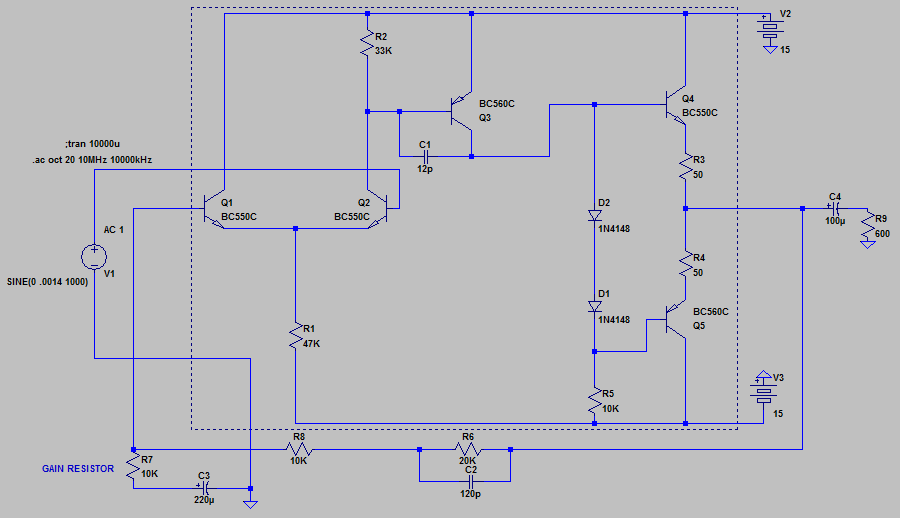ForthMonkey
Well-known member
I'm still learning design with LTspice.I have idea.Transformer input and one op amp mic preamp.But op amp is discrete.It's like API Style.So i started with simple discrete op amp.

It's working good.But i won't make like 2520 op amp.I wwant to build only one circuit like discrete mic preamps...
Then i looked Forsell API Preamp.And i simulated it with LTspice.
It's circuit.Circuit uses 10K pot for gain.So i use 10K to measure full gain.

It's transient.Gain resistor:10K.

It's AC analysis.10mHz-10MHz.

Noise 10mHz-60MHz

What do you think?

It's working good.But i won't make like 2520 op amp.I wwant to build only one circuit like discrete mic preamps...
Then i looked Forsell API Preamp.And i simulated it with LTspice.
It's circuit.Circuit uses 10K pot for gain.So i use 10K to measure full gain.

It's transient.Gain resistor:10K.

It's AC analysis.10mHz-10MHz.

Noise 10mHz-60MHz

What do you think?





